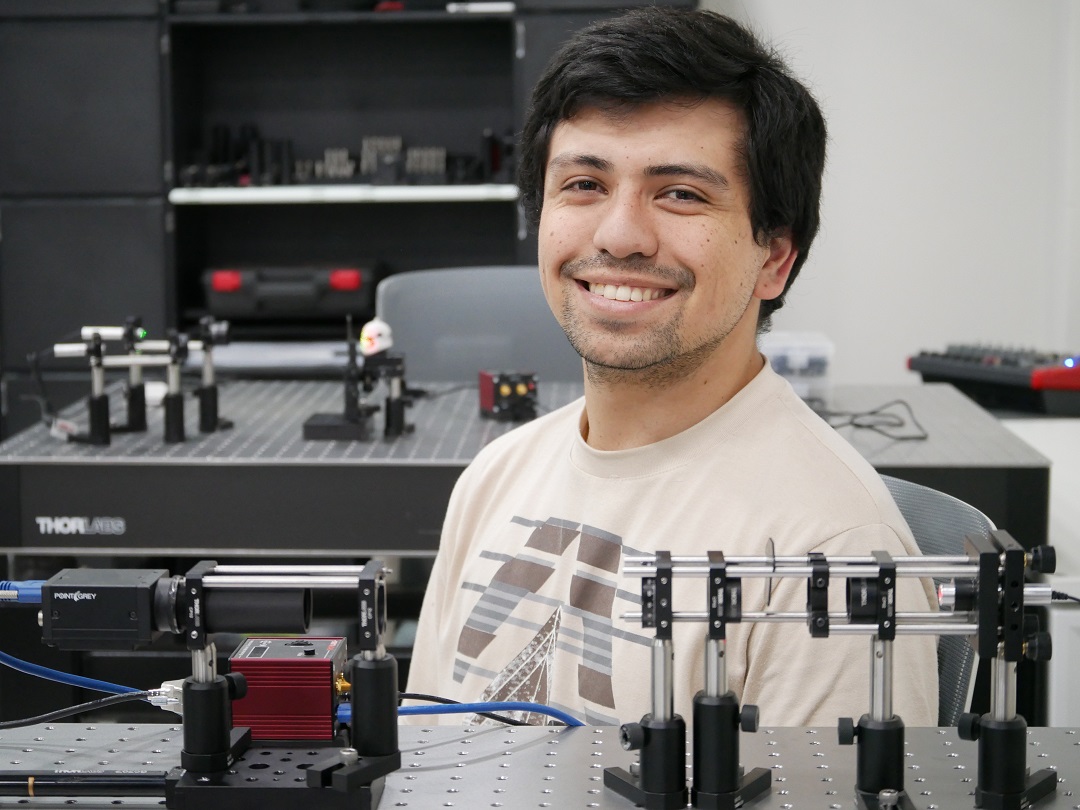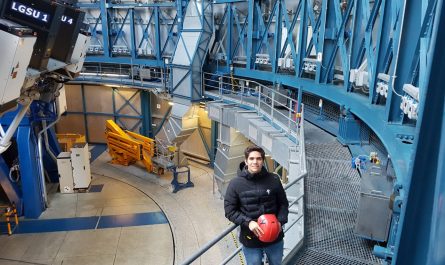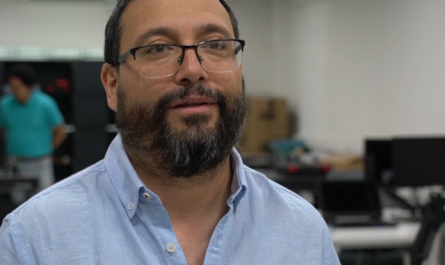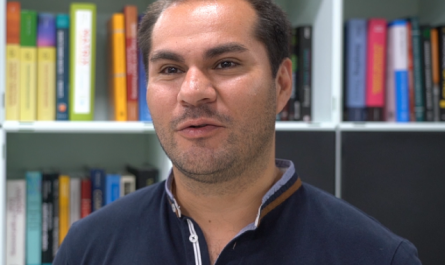Camilo Weinberger is a Graduate in Physics and Master in Science with mention in Physics from the Physics Institute (IFIS) of the Pontificia Universidad Católica de Valparaíso, and has worked as an assistant of the optoelectronics laboratory of the Electric Engineering School (EIE) of the Engineering Faculty of the PUCV for the past years.
From now on, we take his testimony taking part on the development of the research in this field, through multidisciplinary work:
How do get to work at the laboratory?
Camilo (C): It was from an invitation of professor Vera. He was collaborating with professor Darío Pérez, guide in my undergraduate thesis. During that time, professor Vera was just starting at the laboratory, and was looking for some glasses he requested from professor Pérez. I spoke to him, made some recommendations and after talking, he asked me if I was motivated to do the montage. I was very interested, and that turned out in an invitation to take part of the laboratory. I got to the laboratory in 2018. I had been collaborating with professor Pérez in IFIS for around three or four years.
In what has consisted your work in the laboratory?
C: One of the first things was to make that montage and watching the functioning of the devices it had. The professor was working on a montage that is called shack hartmann, which allows you to measure the front of a light wave. It measures the phase. The professor had acquired it not long ago at the Engineering (Faculty). He was researching on adaptive optics. That was how we began to enter that area. The next thing was programming a deformable mirror to make corrections of images in telescopes. Everything else has been following the same work line, working with this deformable mirror. Working directly with a computer neuronal network to make it learn to recognize the different deformations of the light spread in space. It has been mainly the testing of the networks, the optimal configuration for the montage that we are developing, among other things. The montage consists in a deformable mirror and two cameras.
Have you had the chance to present the work done?
C: Yes. Everything began when the professor made a comment to me about an event that was being made in Canada about engineering in extremely big telescopes, that was done in Québec. I took part of two events there; one, presenting a poster, at a workshop of Université Laval. The main subject was big observatories, and the workshop was about laser work, techniques and new types of device that allowed the acquisition of data in these big observatories. I spent a total of ten days in Canada.
What are you working on now?
C: We are working on a project that is about recognition of the Zernike modes, through image acquisition and training of neuronal networks. Basically, the idea is to create a shack Hartmann, but of a much lower cost. The shack Hartman is much more consolidated. In our case, the algorithms are checked with MatLab, so it works properly and it’s fast. We test it to compare it. But the research evolver with a new idea. We got a proposal from the Miami W.M Keck observatory, United States. They work with shack hartmann and other kind of sensors there. The research we have is that the shack works on real time, but if we talk about a minute order change sampling, what is observed is that the surrounding can change a lot, or we waste the system by putting a much more slower sensor and increasing the cost of the montage. The idea became to take advantage of our work to generate an algorithm to predict how can a new deformation generate in a few more minutes, so that the mirror doesn’t have to deform in an abrupt way.
What kind of challenges implies working on a multidisciplinary way?
C: From a point of view from someone who comes from the outside, the language as such was a little difficult. Despite sharing the focus in physics, in physics we were more focused in education, the theory… Arriving at a laboratory where the data concern (even though you still work, of course) is not primordial, but how you obtain it, was very challenging. There were a lot of technicisms typical of the engineering ambit that I had to learn. I was used to have a network and observe the data and there, the results. Here, I had to slow down and go a Little backwards, to see how I have to acquire the data. It is challenging, without a doubt.
How do you outline yourself professionally in the future?
C: I think that in research and enforcement. That motivated me to get to this laboratory. In many IFIS level conferences when I was in undergraduate, the focus of my exhibitions didn’t have a lot of that. My professors had a perception that I was trying to go to engineering, taking that path. At first it was uncomfortable. Regardless, I was always interested in concept application: the need to explain something an taking it to reality has always been important. It the engineering focus. Science has to do with understanding, and engineering is much more about applying. I love to research.
To get to know more about the work on the optoelectronics laboratory and the opportunities for the students, you can visit their website.





